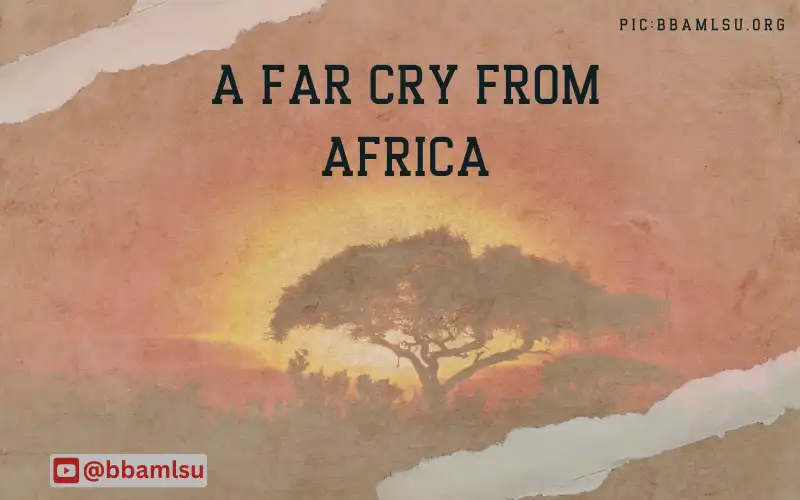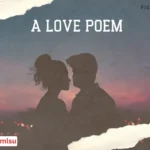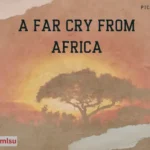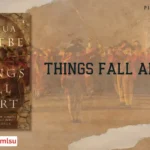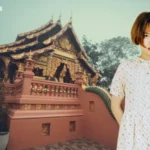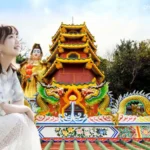Let’s dive into a detailed, line-by-line analysis of Meena Alexander’s poem “Muse.”
We’ll explore the meaning, themes, symbols, and other literary devices present in each line and stanza.

Stanza 1
“My mother said I was a poet
From the moment I could speak.
She said I sang when I spoke
And the words made the air tremble.“
Line-by-Line Analysis
Line 1: “My mother said I was a poet”
- Meaning: The speaker begins with a declaration of her mother’s early recognition of her poetic talent. This sets the tone for the poem, emphasizing the significance of maternal influence in shaping the speaker’s identity. It suggests an inherent quality in the speaker, as if being a poet is part of her essence.
- Theme: The theme of predestined talent and identity is introduced. The idea that one’s vocation can be evident from a young age is explored here.
Line 2: “From the moment I could speak.”
- Meaning: This line reinforces the notion that the speaker’s poetic ability was evident from her earliest moments of speech, implying a natural, almost instinctive inclination towards poetry.
- Theme: This line underscores the theme of innate talent and the natural emergence of artistic ability.
Line 3: “She said I sang when I spoke”
- Meaning: The mother’s perception that the speaker’s spoken words were akin to singing highlights a lyrical, musical quality to her speech. This comparison suggests a seamless blend of everyday language and poetry.
- Theme: The idea of inherent musicality in language and the connection between everyday speech and poetry is emphasized.
Line 4: “And the words made the air tremble.”
- Meaning: The metaphor of the words making the air tremble conveys the power and impact of the speaker’s language. It suggests that her words carry weight and significance, capable of affecting the physical environment.
- Theme: The transformative power of language and the profound impact of poetry are key themes here.
- Imagery: The trembling air evokes a vivid, almost magical image of the spoken word’s power, adding a mystical quality to the speaker’s talent.
Stanza 2
I think of my muse as a child
Small, unable to dance or sing,
Her feet crushed into tiny black shoes,
The red bow of her mouth
Held tight, a note of music
Trapped in her throat.
Line-by-Line Analysis
Line 5: “I think of my muse as a child”
- Meaning: The speaker personifies her muse as a child, implying a sense of innocence, vulnerability, and potential. The muse is depicted as young and nascent, symbolizing the early stages of inspiration and creativity.
- Theme: The theme of the muse as a source of inspiration and the poet’s relationship with her own creativity is introduced.
- Symbol: The child symbolizes purity, untapped potential, and the beginning stages of artistic development.
Line 6: “Small, unable to dance or sing,”
- Meaning: The description of the muse as small and unable to express herself fully through dance or song suggests limitations and constraints. This line reflects the struggles and barriers that the poet faces in accessing her creativity.
- Theme: The limitations on artistic expression and the challenges inherent in the creative process are highlighted.
- Imagery: The imagery of the muse being unable to dance or sing evokes a sense of sadness and restriction.
Line 7: “Her feet crushed into tiny black shoes,”
- Meaning: The black shoes symbolize physical and metaphorical constraints on the muse’s ability to move and express herself freely. This line suggests societal or personal limitations that inhibit creative freedom.
- Theme: Themes of repression and the constraints imposed on artistic expression are emphasized.
- Symbol: The black shoes symbolize restrictions and the suppression of potential.
Line 8: “The red bow of her mouth”
- Meaning: The red bow on the muse’s mouth suggests both a visual and metaphorical restriction on speech. It symbolizes a silenced voice or repressed creativity.
- Theme: This reinforces the theme of constrained expression and the difficulty of finding one’s voice.
- Symbol: The red bow symbolizes suppression and the control over expression.
Line 9: “Held tight, a note of music”
- Meaning: The image of holding tight a note of music illustrates the muse’s suppressed potential for expression. The note of music represents the creative ideas and expressions that are trapped within her.
- Theme: The theme of suppressed creativity and the struggle to give voice to artistic ideas is highlighted.
- Imagery: The trapped note of music evokes a powerful image of unfulfilled artistic potential.
Line 10: “Trapped in her throat.”
- Meaning: The final image of the stanza emphasizes the complete suppression of the muse’s voice. It suggests that the creative impulse is present but unable to be expressed.
- Theme: This line concludes the stanza with a strong depiction of stifled creativity.
- Imagery: The image of music trapped in the throat evokes a visceral sense of frustration and unexpressed talent.
Stanza 3
Her words are blue and green,
Yellow and red,
Drawn from the sea, the earth,
The air we breathe.
Line-by-Line Analysis
Line 11: “Her words are blue and green,”
- Meaning: The colors blue and green often symbolize calmness, nature, and tranquility. The muse’s words are depicted as vibrant and drawn from natural elements, suggesting a deep connection to the environment.
- Theme: The theme of the natural world as a source of inspiration is introduced.
- Imagery: The vivid colors create a sensory experience, suggesting that the muse’s words are alive with the beauty of nature.
Line 12: “Yellow and red,”
- Meaning: The addition of yellow and red evokes warmth, energy, and passion. These colors represent the emotional intensity and vitality of the muse’s words.
- Theme: This line emphasizes the diversity and richness of the muse’s inspiration.
- Imagery: The contrasting colors enhance the idea of a full spectrum of emotions and experiences that the muse draws from.
Line 13: “Drawn from the sea, the earth,”
- Meaning: The muse’s words are derived from fundamental natural elements, symbolizing a profound connection to the environment. The sea and earth represent depth and grounding, respectively.
- Theme: This line reinforces the theme of nature as a fundamental source of creative inspiration.
- Symbol: The sea and earth symbolize the depth and grounding of the poet’s creative sources.
Line 14: “The air we breathe.”
- Meaning: Inspiration is also drawn from the air, symbolizing something essential and omnipresent. The air we breathe represents the ever-present and vital nature of creative inspiration.
- Theme: This suggests that creativity is as vital and pervasive as the air itself, essential for life and expression.
- Imagery: The mention of air ties the muse’s words to the essential, life-giving elements, emphasizing the natural and essential nature of poetic inspiration.
Stanza 4
She calls me by name,
Tells me my skin is a map
Of a long journey, a flag
Raised high, the sign of a wing.
Line-by-Line Analysis
Line 15: “She calls me by name,”
- Meaning: The muse’s intimate knowledge of the poet, addressing her directly, indicates a personal and profound connection. It suggests that the muse understands the poet’s identity and experiences deeply.
- Theme: This line emphasizes the personal relationship between the poet and her muse.
- Symbol: Calling by name symbolizes recognition and validation of the poet’s identity.
Line 16: “Tells me my skin is a map”
- Meaning: The poet’s skin as a map suggests that her body bears the marks of her experiences and history. The skin as a map symbolizes the physical and metaphorical journey of the poet’s life.
- Theme: This introduces the theme of the body as a repository of memory and identity.
- Imagery: The skin as a map evokes a visual of a marked and storied surface, rich with history.
Line 17: “Of a long journey, a flag”
- Meaning: The long journey refers to the poet’s life experiences, while the flag symbolizes pride and identity. The raised flag suggests a celebration of the poet’s history and achievements.
- Theme: This line underscores themes of journey, identity, and the pride associated with personal history.
- Symbol: The flag represents a declaration of identity and heritage.
Line 18: “Raised high, the sign of a wing.”
- Meaning: The raised flag and the sign of a wing suggest aspiration and freedom. The wing symbolizes the ability to transcend limitations and rise above constraints.
- Theme: This emphasizes themes of aspiration, freedom, and transcendence.
- Symbol: The wing symbolizes flight, freedom, and the ability to rise above constraints.
Stanza 5
She tells me to sing
Of what I cannot remember,
A song of impossible flight.
Line-by-Line Analysis
Line 19: “She tells me to sing”
- Meaning: The muse urges the poet to express herself through song, reinforcing the central metaphor of creativity. Singing symbolizes the act of creation and the expression of inner truths.
- Theme: This highlights the theme of artistic expression and the muse’s role in inspiring it.
- Symbol: Singing symbolizes the act of creation and the expression of inner truths.
Line 20: “Of what I cannot remember,”
- Meaning: The muse instructs the poet to sing about forgotten or subconscious memories. This represents the exploration of hidden or repressed aspects of the self through art.
- Theme: This introduces the theme of exploring the subconscious and the unknown in the creative process.
- Symbol: The unremembered symbolizes hidden or repressed aspects of the self that art seeks to uncover.
Line 21: “A song of impossible flight.”
- Meaning: The poet is encouraged to create a song about transcending limitations and achieving the unattainable. This represents the aspiration for creative and personal transcendence.
- Theme: This line concludes with the theme of aspiration and the pursuit of the sublime in art.
- Imagery: The imagery of impossible flight evokes a sense of boundless creativity and the limitless potential of the human spirit.
Themes
Inherent Talent and Identity: The poem explores the idea that poetic talent is an intrinsic part of the speaker’s identity, evident from an early age.
Influence of Family: The mother’s early recognition and nurturing of the speaker’s talent plays a significant role in shaping the poet’s sense of self.
Nature and Creativity: The poem draws a deep connection between the natural world and artistic inspiration, suggesting that creativity is rooted in the fundamental elements of life.
Struggle and Constraint: The muse’s depiction as a constrained child reflects the challenges and limitations faced by the poet in accessing and expressing her creativity.
Memory and Identity: The poet’s skin as a map of her journey highlights the theme of the body as a repository of personal and collective history.
Aspiration and Transcendence: The poem concludes with the theme of aspiring for transcendence and achieving the sublime through artistic expression.
Imagery and Symbols
Trembling Air: Symbolizes the powerful impact of the poet’s words.
Child Muse: Represents innocence, potential, and the early stages of inspiration.
Black Shoes: Symbolize constraints and limitations on creative freedom.
Red Bow: Represents suppressed creativity and silenced voice.
Colors (Blue, Green, Yellow, Red): Symbolize the richness and diversity of the muse’s inspiration drawn from nature.
Map and Flag: Represent the poet’s journey, identity, and pride in her heritage.
Wing: Symbolizes freedom, aspiration, and transcendence.
Structure, Form, & Rhyming
Structure: The poem is structured in five stanzas of varying lengths. Each stanza explores different aspects of the relationship between the poet and her muse, creating a cohesive narrative about the challenges and inspirations of the creative process.
Form: “Muse” is written in free verse, allowing for a fluid and organic expression of thoughts and emotions. This lack of a strict formal structure mirrors the unpredictable and natural flow of inspiration and memory.
Rhyme: There is no fixed rhyme scheme in the poem. The use of free verse means that the poem relies more on rhythm, imagery, and thematic coherence rather than on end rhymes. This approach emphasizes the natural, unstructured flow of the poet’s thoughts and the organic nature of inspiration.
Historical Background
Meena Alexander:
Meena Alexander (1951-2018) was an acclaimed Indian-American poet and scholar. Born in India, she spent parts of her childhood in Sudan and her later years in the United States.
Her work often reflects her multicultural background and the complexities of identity, migration, and displacement.
Cultural Context:
Alexander’s poetry frequently engages with themes of diaspora, the search for identity, and the interplay between personal and collective histories.
Her own experiences as an immigrant inform her exploration of these themes, providing a rich context for understanding “Muse.”
Feminist and Postcolonial Perspectives:
Alexander’s work is also shaped by feminist and postcolonial perspectives. She often addresses the struggles and constraints faced by women, particularly in the context of artistic expression and cultural expectations.
In “Muse,” the depiction of the muse as a constrained child can be interpreted as a reflection on the limitations imposed on female creativity.
Literary Influences:
Alexander’s poetry is influenced by a wide range of literary traditions, including classical Indian literature, Western literary canon, and contemporary postcolonial writing.
Her work bridges these diverse influences, creating a unique voice that resonates with themes of hybridity and cross-cultural dialogue.
Conclusion
Meena Alexander’s “Muse” is a richly layered poem that explores themes of identity, memory, and the creative process through vivid imagery and symbolic language.
Each stanza contributes to a deeper understanding of the poet’s relationship with her muse, an entity that embodies both inspiration and the challenges of artistic expression.
The poem’s structure, with its free verse and flowing lines, mirrors the natural and sometimes fragmented nature of memory and inspiration.
Alexander’s use of color, natural elements, and powerful symbols like the child muse, black shoes, and the skin as a map, all serve to deepen the reader’s engagement with the themes of repression, potential, and the transformative power of poetry.
In “Muse,” Alexander captures the essence of the poetic journey, from the initial recognition of talent to the ongoing struggle for expression and the ultimate aspiration for transcendence.
This detailed analysis reveals the poem’s intricate weaving of personal and universal themes, making it a compelling reflection on the nature of creativity and the role of the muse in the life of a poet.


